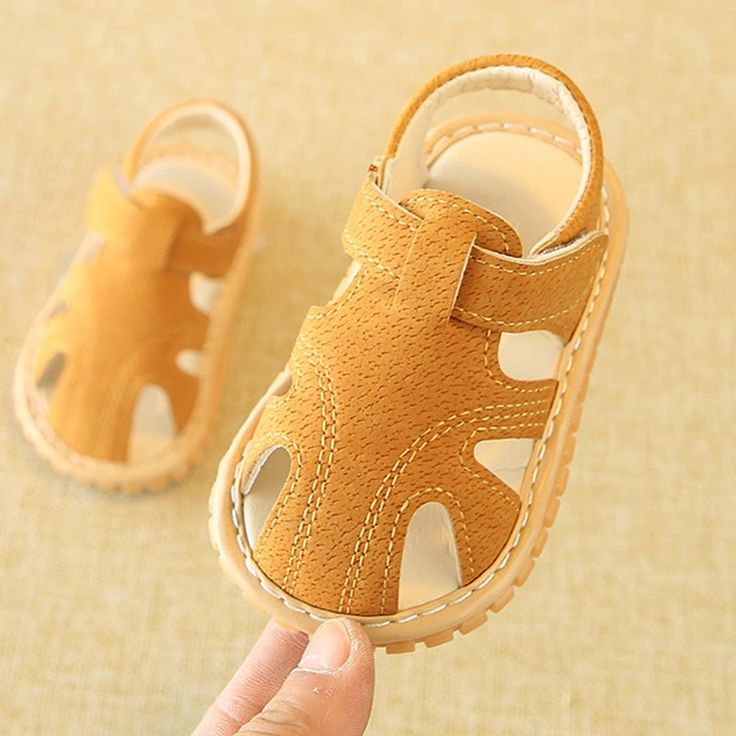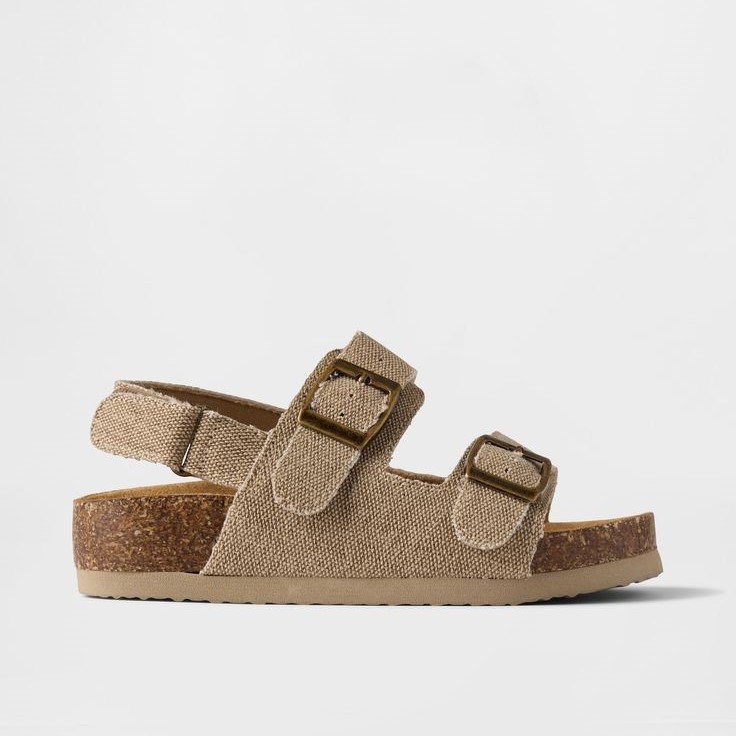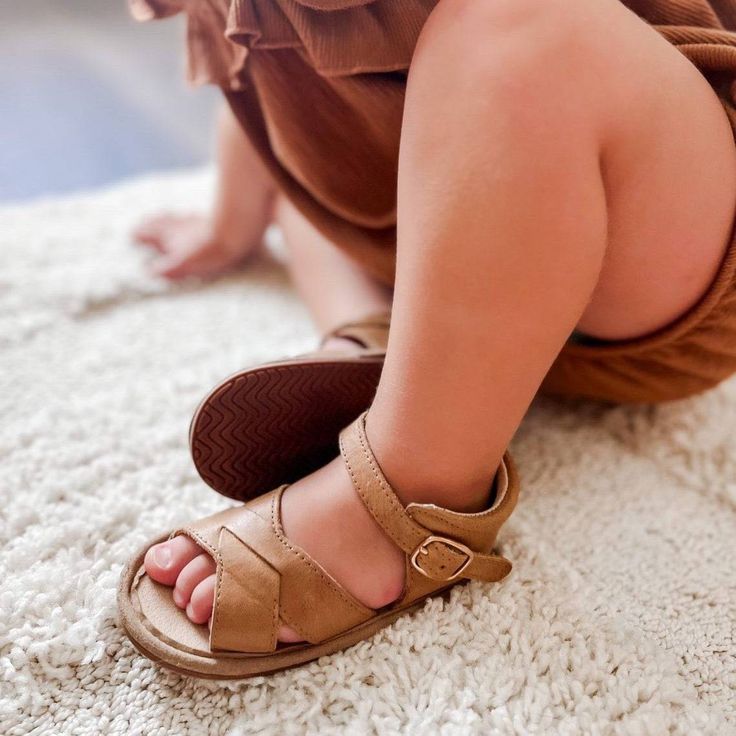Why Choosing Proper Sandals Matters for Toddlers
Selecting the right toddler sandal is vital for your child’s well-being. Proper sandals support foot development, ensure comfort, and minimize risks of injuries.
Importance of Foot Health
Healthy foot development starts early. Poor footwear can cause lasting issues. Toddler sandals should support natural growth. They need a proper fit, arch support, and flexibility. High-quality sandals prevent discomfort, blisters, and foot deformities. Prioritizing foot health helps build a solid foundation for an active lifestyle.
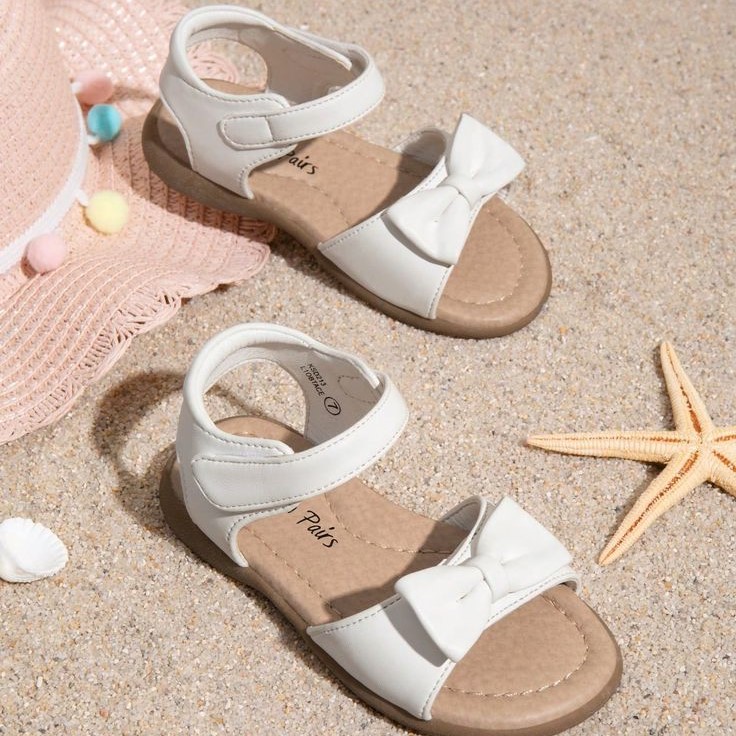
Supporting Early Walking Development
Toddlers are still mastering balance and coordination. Sandals with sturdy soles prevent slips and falls. Lightweight designs help build confidence with every step. Proper sandals also aid in strengthening foot muscles during walking. Shoes that prioritize walking development make outdoor play safe and fun. Always choose sandals designed for growing, active feet.
Types of Toddler Sandals
Selecting the right type of toddler sandal can impact comfort, safety, and functionality. Various styles cater to specific needs. Let’s explore the common types.
Open-Toe vs. Closed-Toe Options
Open-toe sandals allow free movement and ventilation. They’re great for warm weather and casual wear. These are ideal for toddlers who like to keep their feet cool. However, they offer less protection, increasing the risk of foot injuries.
Closed-toe sandals cover and protect the toes. They’re perfect for active toddlers playing outdoors. These sandals shield toes from bumps, scrapes, and debris. Though less breathable, they prioritize safety in more rugged environments. The choice depends on activity and child’s preference.
Velcro, Buckles, and Pull-On Styles
Velcro sandals are the easiest for toddlers to wear. They allow quick adjustments and a snug fit. Velcro straps also make independent dressing a fun learning step for toddlers.
Buckled sandals offer a secure fit. They are durable and stylish. However, they might need adult assistance for securing. These are better for longer outings or dressier occasions.
Pull-on sandals provide convenience. No buckles or straps make them quick to wear. However, they may lack adjustable fit or firm security. Pull-on options work best for quick trips or water activities.
Every toddler’s needs vary. Matching the sandal style to the activity ensures comfort and protection.
Key Features to Look for in Toddler Sandals
Choosing the right toddler sandal goes beyond style. It is essential to focus on key features that ensure safety, comfort, and support for your little one’s developing feet.
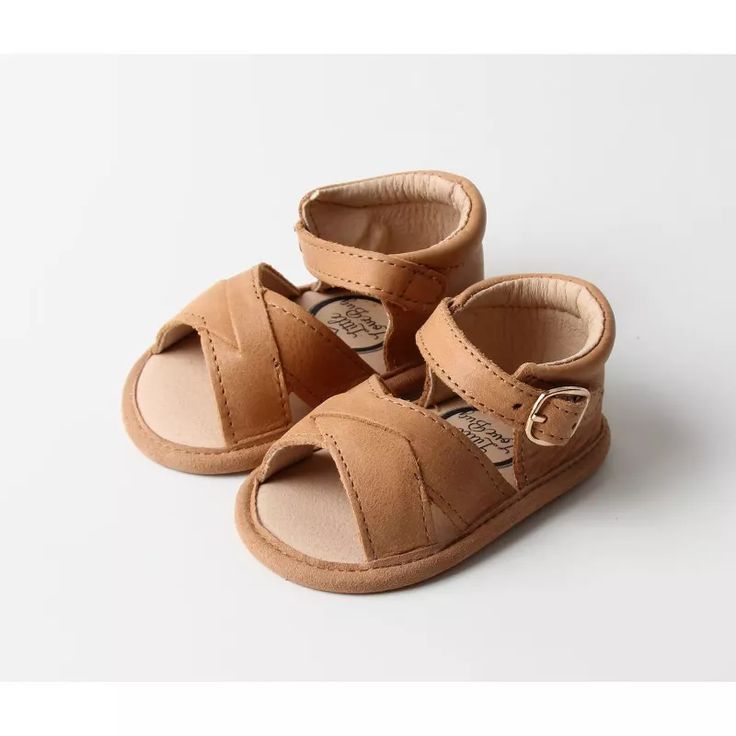
Comfort and Cushioning
Toddler sandals must feel comfortable for all-day wear. Look for padded insoles to reduce pressure on sensitive feet. Proper cushioning prevents soreness and supports natural movement. Soft, flexible soles allow toddlers to walk freely without discomfort.
Lightweight and Breathable Materials
Lightweight materials make sandals easier for toddlers to wear and walk in. Breathable fabrics keep feet cool and dry, preventing sweat build-up. Leather or mesh uppers are ideal for allowing airflow. Ensuring the sandal feels light helps your toddler enjoy active play without feeling weighed down.
Non-Slip Soles for Safety
Safety is crucial for toddlers learning to walk and play. Choose sandals with non-slip soles to reduce the risk of slips. Look for textured or rubber outsoles for better grip on various surfaces. Non-slip sandals are essential for playgrounds, wet areas, or uneven terrain.
Prioritize these features when selecting toddler sandals to keep your child comfortable, secure, and ready for fun.
How to Choose the Right Size for Toddler Sandals
Finding the right-sized toddler sandal is crucial for comfort and safety. An improper fit can cause discomfort, restrict movement, or harm foot development. Let’s explore how to ensure you pick the perfect size.
Measuring Toddler Feet Correctly
Accurate measurements are essential for a proper fit. Here’s how to measure your toddler’s feet:
Use a Measuring Tool
- Select the Right Tool: Choose a ruler or a foot measuring device designed specifically for measuring footwear. These tools provide accurate measurements, ensuring the best fit for your toddler’s sandals.
- Proper Usage: Ensure the measuring tool is used correctly to avoid inaccuracies. If using a traditional ruler, lay it flat and ensure it is aligned straight with the foot for accurate measurements.
Trace the Feet
- Prepare Your Workspace: Find a flat, clean surface and gather a piece of paper and a writing utensil. Ensure there’s enough space for your toddler to comfortably stand.
- Position Your Toddler: Have your toddler stand on the piece of paper with their weight evenly distributed across both feet. This helps capture the true shape and size.
- Careful Tracing: Gently trace around each foot, keeping the pen or pencil perpendicular to the paper to accurately capture the outline without any distortion.
Measure Length and Width
- Determine Length: Once you have the tracings, measure the longest part of each footprint (typically from the heel to the longest toe) to determine the length.
- Determine Width: Measure the widest part of the foot tracing to find the width. This step is crucial, as kids can have varying widths even if their length is the same.
- Find the Correct Size: Compare your measurements against the sizing chart of the sandal brand to find the appropriate size for your toddler based on both length and width.
Account for Socks
- Consider Sock Thickness: If your toddler will be wearing socks with their sandals, it’s important to account for this additional size.
- Add a Small Allowance: Typically, adding about one-eighth to one-quarter of an inch to each measurement will create enough space for comfort without being too loose.
Try Both Feet
- Measure Each Foot Individually: Feet can vary in size, so it’s essential to measure both feet separately. Ensure that your toddler is standing straight during this measurement for accuracy.
- Choosing the Right Size: After measuring, select the size that corresponds to the larger foot. This ensures that the sandals will fit comfortably without pinching or squeezing either foot.
- Regularly Reassess Size: Keep in mind that children grow quickly, so it’s a good idea to reassess foot size every few months to ensure a proper fit over time.
Remember to remeasure if your child hasn’t been fitted recently. Children’s feet can grow quickly, and outdated measurements might result in discomfort.
Account for Growth Spurts
Toddlers experience rapid growth. Consider these tips to accommodate growth while ensuring a good fit:
- Leave Room for Growth: Opt for sandals with a small amount of extra space. One thumb-width at the toe area works well.
- Adjustable Sandals: Choose designs with Velcro straps or buckles for flexibility as your child grows.
- Avoid Oversized Sandals: Don’t buy sandals that are too large; they can lead to slips or discomfort.
- Monitor Growth Over Time: Regularly check your toddler’s sandal fit every few months and replace them if they’re too tight.
By measuring precisely and accounting for growth spurts, you can help your toddler stay comfortable and active in the perfect pair of sandals.
Sandals for Different Activities and Occasions
Choosing the best toddler sandal depends on the activity and occasion. Different situations call for specific features. Here’s a guide to matching sandals with your child’s needs.
Everyday Wear
For daily use, comfort is key. Look for lightweight sandals with cushioned insoles. Breathable materials like leather or mesh keep feet cool. Velcro straps are great for easy adjustments and quick dressing. Choose styles that allow natural movement without causing discomfort. Everyday sandals should suit casual outings, playdates, and strolls in the park.
Water-Resistant Sandals for Outdoors
Outdoors and water activities require durable, water-resistant sandals. Synthetic materials like neoprene dry quickly. Look for sandals with non-slip soles to prevent accidents on wet surfaces. Closed-toe designs offer extra protection against sharp rocks or debris. Adjustable straps ensure a secure fit during active play. These sandals are ideal for beach trips, pool time, or rainy days.
Occasion-Specific Sandals (Formal Events, etc.)
Formal occasions call for stylish yet functional sandals. Leather or faux leather materials provide an elegant appearance. Buckled designs offer a more polished look compared to Velcro or pull-ons. Ensure the sandals still provide the comfort and support toddlers need. Occasion-specific sandals suit weddings, family gatherings, and holiday celebrations.
By aligning sandal features with specific activities, you can ensure both safety and functionality for your toddler. Always prioritize comfort and fit, regardless of the occasion.
Common Mistakes to Avoid When Buying Toddler Sandal
Choosing toddler sandals requires care and attention. Avoid these common mistakes for your child’s comfort and safety.
Picking Trend Over Comfort
Many parents prioritize trendy designs over functionality. This can harm a toddler’s foot development. Comfortable sandals ensure a proper fit and long-lasting wear. Choose sandals with soft insoles and supportive structures. Avoid hard materials that may cause blisters or discomfort. A cute design is appealing, but your child’s comfort should come first. Always prioritize features like flexibility, cushioning, and adjustability over looks.
Ignoring Sole Quality
The sole is essential for safety and comfort. Low-quality soles may be slippery or too stiff. Non-slip soles help prevent accidents on various surfaces. Sandals with flexible soles promote natural foot movement. Avoid thin soles that don’t provide enough cushioning or protection. Inspect the sole material before buying to ensure it meets safety and durability standards. Durable soles are crucial for toddlers exploring rougher terrains or playing outdoors.
Avoid these mistakes and focus on the right features. Proper sandals will keep your toddler happy and supported.
Maintenance and Care for Toddler Sandal
Proper care ensures sandals last longer and remain comfortable for your toddler. Regular upkeep protects their quality and hygiene.
Cleaning and Storing Tips
Clean Regularly
- Wipe After Use: It’s essential to wipe down your sandals after each wear, particularly if you’ve used them for outdoor activities or at the beach. This helps remove any sand, dirt, or debris that could accumulate and damage the material over time.
- Focus on Outdoor or Water Activities: Pay extra attention to cleaning your sandals after exposure to water or rough terrain, as these conditions can leave residues that are more challenging to remove.
Use Mild Soap
- Choose Gentle Cleaners: When washing your sandals, opt for warm water and a mild soap. Avoid using harsh chemicals as they can damage the materials.
- Remove Dirt and Sweat: The combination of mild soap and warm water effectively breaks down dirt, grime, and sweat that can build up, ensuring your sandals remain clean and fresh.
Dry Completely
- Air-Dry Before Storage: After washing, always allow your sandals to air dry completely. This is crucial to prevent moisture from being trapped, which can lead to mold growth.
- Prevent Odor: Proper drying is also important in minimizing unwanted odors that can develop when sandals are stored while damp.
Avoid Harsh Chemicals
- Skip Strong Detergents: Be cautious about using bleach or other strong detergents that can weaken the materials. Such chemicals may cause discoloration and deterioration, ultimately shortening the lifespan of your sandals.
- Safeguard Material Integrity: By avoiding these harsh chemicals, you protect the integrity and appearance of your sandals, keeping them looking new for longer.
Store Properly
- Choose the Right Environment: Store your sandals in a cool, dry place when not in use. Excessive heat and humidity can lead to deterioration and affect the fit.
- Avoid Direct Sunlight: Keeping sandals away from direct sunlight helps prevent fading and material breakdown caused by UV exposure.
Inspect Often
- Regular Checks: Make it a habit to inspect your sandals for any signs of wear, such as tears, fraying, or damage during your cleaning routine.
- Ensure Safety: Identifying potential issues early on helps in maintaining safety and comfort while wearing your sandals, preventing accidents that could occur from faulty footwear.
When to Replace a Pair
Noticeable Wear and Tear
- Inspect Soles Regularly: Pay close attention to the soles of the sandals. If you notice significant wear or thinning, it’s time to consider replacing them, as compromised soles can affect stability.
- Check Strap Integrity: Look for signs that the straps are weakening, such as fraying or stretching. If the straps no longer provide adequate support, it’s essential to replace the sandals for safety reasons.
Size Changes
- Monitor Your Child’s Growth: Children’s feet grow rapidly, and what fit well last season may now be too tight. If your child complains about discomfort or shows signs of having outgrown their sandals, it’s time to get a new pair.
- Check for Sizing Issues: Ensure that there is sufficient room in the toe box and that your child’s heel does not hang over the back of the sandal. Proper fit is crucial for comfort and mobility.
Loss of Comfort
- Evaluate Cushioning: Over time, the cushioning in sandals can break down and lose its effectiveness. If your child starts to feel discomfort or pain from wearing their sandals, it’s a clear sign that replacement is needed.
- Consider Walking Comfort: If your child frequently complains of sore feet after prolonged wear, the sandals may no longer be providing the necessary support and comfort.
Safety Concerns
- Watch for Slipperiness: If the soles of the sandals become worn and slippery, this can pose a significant safety risk. Replacing them ensures your child has the grip needed to prevent slips and falls.
- Prioritize Grip and Stability: Ensuring that your child’s footwear has decent traction is key, especially in wet or uneven conditions. If the treads are smooth or damaged, it’s time to invest in a new pair.
Periodic Assessment
- Schedule Regular Inspections: Make it a practice to check your child’s sandals every few months. This allows you to catch wear and tear early and address any fitting issues before they affect comfort.
- Assess Overall Condition: During your checks, look at the condition of the soles, straps, and overall structure of the sandals to ensure they are still safe and appropriate for use. Regular assessments help prolong the life of the footwear and maintain safety.
Maintaining toddler sandals helps preserve their quality, comfort, and safety for everyday use.
